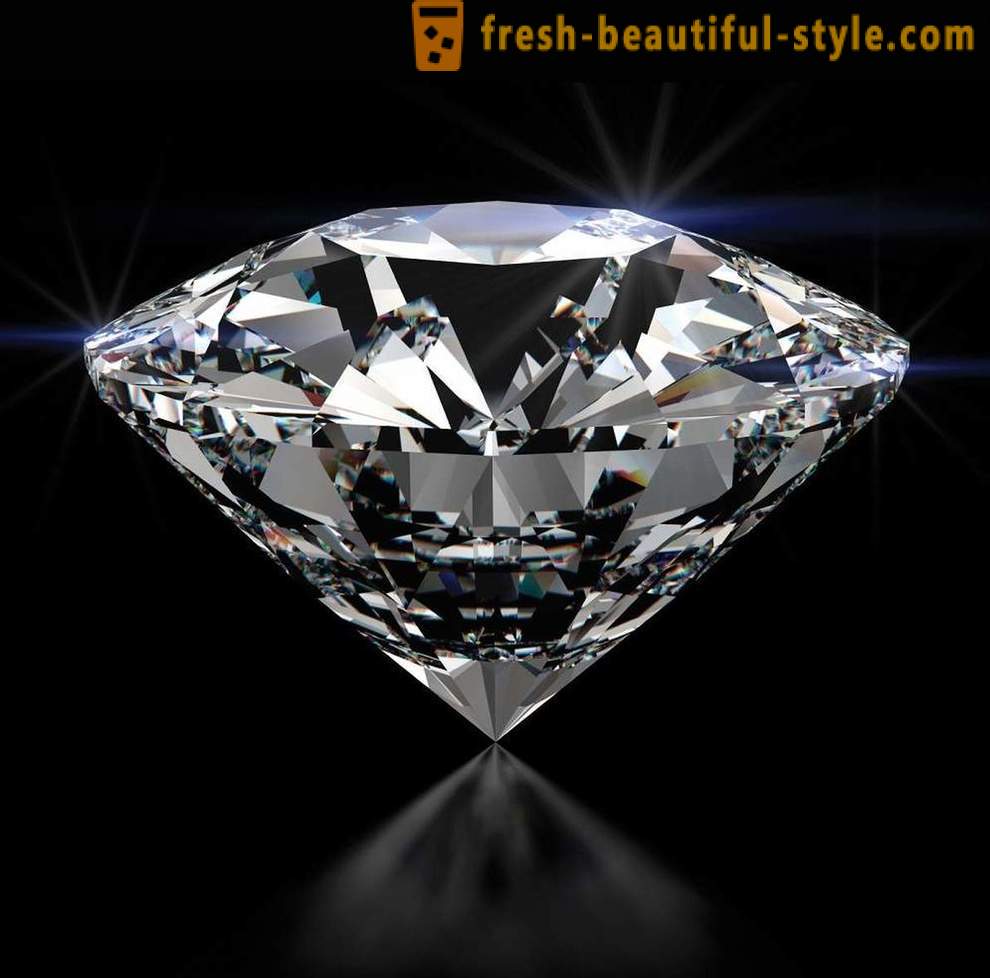6 facts about diamonds

The ancient Greeks believed diamonds tears of gods and splinters of falling stars. Diamonds and attract people today, even though they may have done in the laboratory and in space there are stars, consisting entirely of diamond.
1 not only jewelry
The first association with diamonds - diamond jewelry. Nevertheless, the majority of mined diamonds are used not in jewelry and for industrial purposes. And so it happened since ancient times. Thus, a Harvard physicist Peter Lu found that the ancient Chinese used diamonds to grind ceremonial axes even 4500 years ago. These axes were made of the second hardness of the mineral on earth, corundum. And, of course, treat it was only possible with the help of a diamond. Later they began to grind and jade. This idea came to the Chinese for thousands of years before it began to be applied universally. Today, 80% of all mined diamonds are also used in industry: drilling, cutting, grinding and polishing.
2Camy solid?
"Diamond - the hardest substance on earth" - keep repeating jewelers who want to impress not only the natural beauty of the stone, but also its physical properties. But this is not true. Diamond is really the hardest of natural substances, but at the same time the hardest of all substances known to man.
In 2005, physicist Dubrovinskaya Natalia and her colleagues from the German Bayreuth University conducted experiments with crystals and derived synthetic fabric, called giperalmaz. She could leave scratches on ordinary diamond and surpassed its hardness by 11%.
3 Rarity?
Despite the fact that the process of obtaining diamond rather laborious and gem-quality stones are caught more rarely, in the economic sense, diamonds are not rare, for the simple reason that supply exceeds demand. In order to maintain the high price of diamonds largest supplier companies create artificial scarcity: they are stocking a lot of diamonds, but selling them in small quantities. So this stone from year to year is not losing value.
4 Sky in diamonds
Diamonds are not rare, not only on Earth. In 2004, astronomer Travis Metcalfe of the Harvard-Smithsonian Center for Astrophysics discovered in space the whole diamond star! Located at a distance of 50 light years from Earth in the constellation Centaurus, she had once shone so brightly as our sun, and then went out. Sentimental astronomers named a star in honor of Lucy The Beatses famous song "Lusy in the sky with diamonds". They argue that someday our Sun will become a diamond star. Go to saytBeSeed
5 Diamond, which was not
The fact that diamonds are not rare, does not mean that among them are exceptional instances. Proof of this - 45-carat blue diamond "Nadezhda" (Hope) and the mystical "Kohinoor" (Koh-I-Noor), a huge 546-carat diamond, which in fact never existed. The history of the last associated with the African cannibal emperor Bokassa Jean-Bidelem. In 1977, he ordered Albert Dzholisu, the president of operations for extraction of diamonds, to give him a stone, which will not be nobody else. Clearly, not to execute the order was impossible. But to find a suitable stone was not so easy, and then Dzholis came up with a clever move: he took a large piece of black low-grade diamonds are not suitable for jewelery purposes, but, oddly enough, shaped like the African continent, he polished it and provided a "unique "Bokassa stone. The Emperor was a gift from ecstatic.
6 Artificial diamonds
The idea of creating an artificial diamond is not new. Another medieval alchemists tried to make diamonds, and in 1911 he published a story by HG Wells, "The man who did the diamonds." Nevertheless, scientists have seized the idea and for decades struggled with in order to create unique stones in their own laboratories. Today, chemists can grow these diamonds that even experts can not distinguish from the real thing.
Thus, contrary to popular belief, synthetic diamonds are not necessarily a tiny size: technology is the so-called chemical vapor deposition allows almost any laboratory to put the creation of giant stones and relatively inexpensive to mass produce.













































